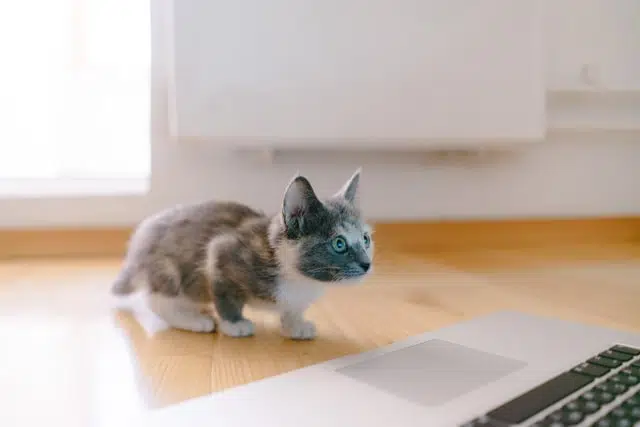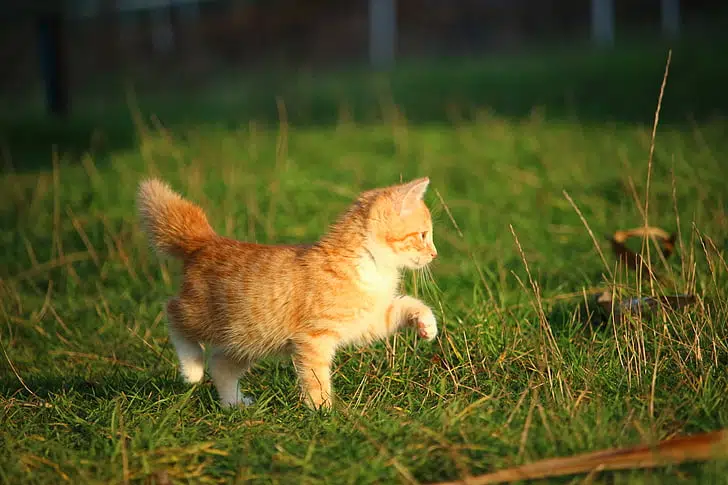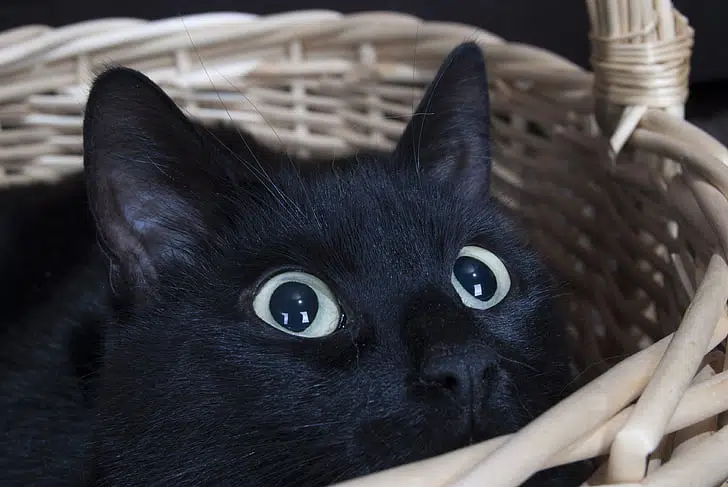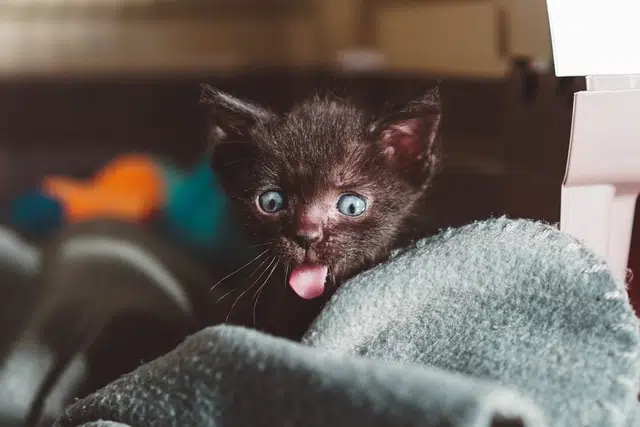Home » Blog » Pet » Pets: Understanding Them » Cat Body Language Demystified
Categories
Tags
animal welfare
breed profile
buying a car
buying a pet
Car
car accessories
car care
car features
car insurance
Car safety
car sales
car service
cat
cat behaviour
cat body language
Cat Breeds
cat food
cat insurance
comprehensive car insurance
Dog
Dog Behaviour
dog body language
Dog Breeds
dog food
Dog Insurance
dog training
eco friendly cars
Kitten
New Car
pet accessories
pet activities
Pet Adoption
pet breeders
pet days of the year
pet fun stuff
Pet Health
pet insurance
pet parenting
Pet Safety
pet services
Puppy
rescue pets
road safety
road trip
safe driving
Recent Blog:
Facebook Posts
4 days ago
Are intestinal worms setting up camp in your dog’s gut without paying rent? Here’s how to spot the main culprits and get rid of them too:![]()
![]() Preventing, Identifying and Treating Intestinal Worms in Dogs - bit.ly/43YjCKu
... See MoreSee Less
Preventing, Identifying and Treating Intestinal Worms in Dogs - bit.ly/43YjCKu
... See MoreSee Less
Preventing, Identifying and Treating Intestinal Worms in Dogs
www.pd.com.au
Intestinal worms, such as roundworms in dogs are one of the least glamorous topics on the planet. These intestinal parasites that basically use our dogs
PD Insurance
with Dogs West.
6 days ago
We enjoyed meeting #breeders #doglovers and members at the Dogs West Open Day. Special thanks to our partner Dogs West for organising an incredible event. There is still time to enter our pawsome competition. Click here for details: bit.ly/4covyce![]() #PDinsurance #dogswestopenday #dogswest
... See MoreSee Less
#PDinsurance #dogswestopenday #dogswest
... See MoreSee Less
6 days ago
Did you know? The Manx is a breed that is known for its lack of a tail, which is caused by a genetic mutation.
... See MoreSee Less
Cat body language can be hard to decipher. Even when you and your cat are close, they can sometimes be as aloof as Danny Zuko is in Grease. You know, the part where he’s wearing that black leather jacket and he makes Sandy cry… ok, ok, back to cats…
Sometimes we humans think a cat’s body language means the same thing as a dog’s, which is a mistake. For instance, a cat’s flicking tail usually does not mean an upswing in mood; in fact, it usually means the opposite.
Having said that, sometimes they’ll move their tail around when you’re patting them and they feel secure. And sometimes flick the tip when they’re feeling playful. Confusing, right??!! That’s cats for you…
We’ve compiled some neat tips to help demystify your cat’s body language. From tail to posture to the tone of meow, find it all out here:
Friendly cat body language
Cat behaviourist, Dr Lauren Finka tells BBC Science Focus Magazine that much of the affection cats show us human parents is the result of neoteny. Neo-what you ask? Neoteny is when a grown-up mammal keeps aspects of its childlike behaviour.
Kneading is an example of neoteny behaviour, which cats do with their feline mother and often with their human parent too. Kittens supposedly knead to release milk from their mum. When they grow up with a human parent it’s still in their nature; so they knead us to show contentment.
Domesticated cats who live in the wild and have a completely different social matrix. Once they’re independent, there are no more parents and no more kneading.
In addition to kneading, Dr Finka says that we humans unwittingly promote other cat behaviours including meowing and purring!
Another wonderful tidbit is that cats rub/bump their foreheads and cheeks against us to scent-mark us as their own! Cats have scent glands in their cheeks, chins, foreheads and the base of their tail. Also read why do cats lick you for the inside story.
In short, we may be able to thank the cat-human relationship for elements of friendly cat body language. That’s totally a-meowsing, right?!
Read understanding cat behaviour to find out some more fun feline facts.

Cat vocalisations and what they mean
Cats have a large range of meows which we humans are still learning to interpret. As a result, you’ll often find several different interpretations for, say, what a silent (soft) cat meow might mean.
One reason for this is that different cat breeds have different vocal tendencies. For example, the Siamese cat breed likes to talk/meow a lot and is known to constantly chat to its pet parents. But some cats may be less verbal. Another reason is cat personality, and in that way every cat is an individual.
For now, we’ve compiled the most cited interpretations of your cat’s meow:
- Soundless meow: Some say cats meow softly because they can hear so well. But most agree it means “I’m actually really hungry and/or thirsty.”
- Short high-pitched meows: This meow is the one to say “Hello! Welcome home” as you walk through the door.
- Low drawn-out meow: This means “I’m bored. I’m dissatisfied. Give me something to do.”
- Soft pleading meow: “Pretty please, I’m hungry and I only have paws. Please serve me some cat food with your opposable thumbs?”
- Hissing/growling: You don’t need to be a scientist to decode this one. Your kitty’s angry, frightened, or irritated. It can also be a warning that means “Don’t come any closer or I’ll scratch you”.
Warning to dogs, this is not an empty threat. If you have a multi-species household, read why cats and dogs fight and how to help. - Yowling: This is your cat sending out a call to prince charming because she’s ready to make baby fluff-balls.
A word of warning, yowling will bring not one, but several prince charmings to your residence. These fellas may fight on your doorstep and will probably pee there too… So, you may also want to read our article on spay and neuter, which covers the pros and cons of desexing your cat.
A cat’s purr
Now that we’ve covered meows, find out what a cat’s purr means. Are you a pup parent? Then read how to speak dog too.

Cat ear language
Not only are cats good listeners but they can also use their ears to speak! That’s right, their cute little furry triangles have a vocabulary all their own.
Here are the A, B, C’s of what a cat’s ears can tell you:
a. Slightly bent forward means your cat’s in a good mood and they’re feeling inquisitive.
b. Pinned back means your feline is fearful or angry. Depending on the situation, hissing or growling may follow. Find out how to break up a cat fight if this is the reason behind those upset ears.
c. Straight up pointy mean something has your cat’s attention and he or she’s listening attentively to work out what it is.
Cat tail language
A cat’s tail holds many tales. The signals cats send with their tails usually have a relatively high level of urgency. If your cat were a bomb, think of the tail as the fuse. In short, you need to know when it’s going to blow.
Therefore, as proud cat mum or dad, it’s important to know how to read them all.
Here’s what a cat’s tail says:
- Puffed tail: “I’m scared. But I’m trying to look big and tough… and I’m getting ready to pounce if need be”
- Flicking tail (not just the tip): “I’m agitated. Give me some space or something to doooooo!”
- Swishing tail: “I’m a hunter and I’m… Getting… Ready… To… Pounce!”
- Twitching tail end: “I’m so like, annoyed right now”
- Straight up tail: “I’m confident and I’m in my element”
- Question mark tail: “I’m happy, social and, oh hey, let’s hang out and chat!”
- Tucked down tail: “I have a bad feeling about this situation and I’m feeling downright nervous”
- Thumping tail: “Do not come near me. Can’t you see I’m blooming angry and I want some space”
- Slow, side-to-side swish tail: Although most feline tail wagging means anger, annoyance or stress, this one can mean your cat is feeling playful.
As you can see a tail is more than good looks and balance.
If you’re reading this because they’re thinking of welcoming a cat into your home, read up on the friendliest cat breeds. Or perhaps you’re getting a second cat? Then read about introducing your kitten and cat.

Cat eyes meaning
Cats have super cool eyes. For starters, they can see well at night, plus their pupils sometimes look round and other times slitty. Beyond this – and most importantly for us cat parents – they also convey messages.
Here’s what you need to know about what your cat is saying with their eyes:
- Constricted pupils: Slitty pupils? You or something else has let your cat down. They’re upset and it’s up to you to notice. Maybe you promised them a snack and never saw it through…?
- Slow blinking and gazing at you: This is one of the great mammalian signals humans and cats share. It means I adore you and I’m saying it with my eyes!
- Dilated pupils: Another shared cat-human trait, dilated pupils show excitement. However, if kitty growls or hisses at the same time, this is high alert defensive behaviour.
So, cats are less of a mystery than we thought. And they show lots of feelings the same way we do. For instance, have you ever come home from a night away and your cat sits with their back to you for the whole day? Yep, they’re clearly disgruntled at being left behind. Just like us!
You might want to read this guide on leaving your cat home alone to see how long is too long.
Cat insurance in Australia
The Beatnik writer William S. Burroughs once wrote “Like all pure creatures, cats are practical”. Cat insurance is a great way to be practical. It can save you money on vet visits, prescription medicine and more.
And it covers third party liability. That means you can take your cat on holiday or to a mate’s place without fear of them making an indelible mark. By that we man kitty property damage is covered. If kitty shreds the curtains at your holiday accommodation and doesn’t have a history of violence, your pet insurance should reimburse much of the cost.
Share On:




